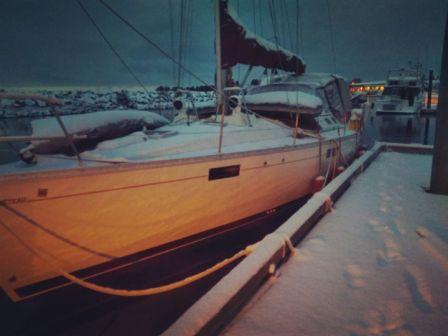I was originally going to post about living on a sailboat during winter closer to winter, but here in Alaska, it’s already here. Additionally, I was reminded that this is the perfect follow up to last week’s blog about living on a sailboat in a marina. If you are interested in living on a boat year round and live in a colder climate or just curious about how it can be done, you will get a lot out of reading this post.
When I announced to my friends and family that I was buying a sailboat and going to live aboard year round, the first thing everyone asked was “Even during the winter?” Let’s face it, I live in Alaska, land of ice and snow, so that’s a legitimate concern. To be honest, I didn’t think it would be an issue and hadn’t really put much thought into it. It certainly wasn’t one of the things I researched.
Living on a sailboat during the winter does pose its unique challenges, but nothing that can’t be overcome. There are hundreds and probably even thousands of people doing it. Here in Sitka, Alaska, there are a lot of people who live on their boats year round, mostly due to the incredibility high cost of housing.
So, how do you living on a sailboat during winter, what are the challenges, and how are they overcome. We’ll get into all that, but first we have to get a few basic things out of the way.

